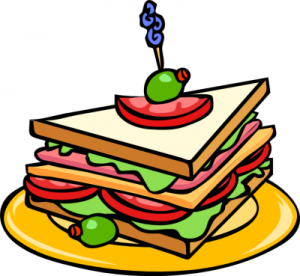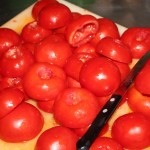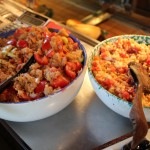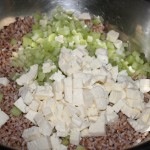Sandwiches, Wraps, Paninis
Whatever you call it, it’s food — usually meat, cheese, or fish, sometimes vegetables — sandwiched in bread holder. Doesn’t matter is the bread is sliced, a wrap, a pita, a bagel, or a roll. Other stuff is added to make it taste good — and sometimes to make it look pretty. Sometimes so much stuff if shoved in that toothpicks are necessary to keep it together. Problem: what happens when you take the toothpicks out and try to get your lunch into your mouth? What’s your dry cleaner bill like?
Soggy Is Gross
Soggy sandwiches take a whole lot of the fun out of eating your lunch. Some things that can decrease the dampness factor:
- Heavier, grainy, crunchy bread adds texture and substance and usually holds up better than the softer, squeezier Wonder Bread types. Rolls and bagels hold up even better – and you can always take out some of the softer stuff in the middle of the roll that might hold some liquid.
- Coating the inside of the bread with butter or cream cheese helps to keep the fluid from some of the sandwich ingredients from getting through to the bread.
- With wraps, layering the inside of the wrap with a very dry lettuce leaf before adding the filling and then tightly rolling the wrap will help to keep the wrap dry and the lettuce intact. Trying to eat a soggy wrap is a feat unto itself.
- With plain old bread, putting the slightly wet lettuce toward the middle of the sandwich not just under the bread, will help keep the bread dry.
- Ditto for tomatoes – they’re added to sandwiches – a lot. So are pickles. Both are really wet. If you salt the tomato, it gets even wetter. Ever pick up your sandwich and have the tomato squirt right out? Sandwiching it in the middle of your sandwich filling helps. Put the tomato or pickle slices in the middle of the sandwich – essentially sandwiched by the meat or bread. This helps keeping the wet stuff away from the bread and, if done right, can help keep the tomato in your sandwich and not on your lap or splattered on your plate.
- If you are transporting a sandwich, bring the mayo, pesto, ketchup, mustard, or whatever dressing you use on the side and add it just before eating. This really helps the soggy factor.
Getting The Sandwich Into Your Mouth Without The Filling Going Splat
This gorgeous (maybe not) and yummy looking sandwich is staring at you waiting to be devoured. The thing is it’s about 6 inches thick. How are you going to get it into your mouth?
Good question. Some suggestions, especially if you are making your own sandwich.
- As above, put the wetter, thicker stuff in the middle – it helps with the slippage factor. This also goes for onions, peppers, shredded lettuce, and cole slaw.
- If you are using thick bread or a roll, scoop out some of the doughy stuff in the middle. It’ll make the sandwich flatter and hold the filling better.
- Many delis and sandwich take-out places will not lay the sliced meat flat but layer it on in almost a crumpled fashion as it comes off of the slicer. This adds volume to the sandwich and makes it look like you are getting a whole lot for your money. This kind of layering is easily squishable because the filling is plumped up with air spaces between the filling slices. Squishing it may get the sandwich down to a size that fits into your mouth. If you are making your own sandwich and want quantity over presentation, lay your slices flat so the sandwich fits into your mouth more easily.
- Don’t put so much stuff on. Balance the amount of meat and cheese or whatever your fillings are. Too much of one thing makes it taste just like that one thing. Balance and layer your fillings so that you can taste them all not just the one dominant flavor.
SocialDieter Tip:
Keep lots of napkins on hand. Try using pitas that haven’t been sliced all of the way around. Take some of the filling out of rolls. Cut your sandwich in quarters – somehow it’s easier to eat. Maybe wear an old tee shirt while you eat your sandwich – and then toss it into the washing machine or just walk around with your lunch on your shirt and not worry about it!







